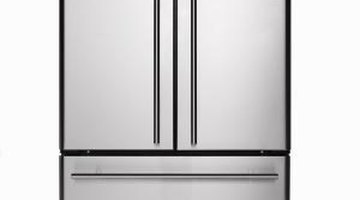What Causes a Failed Refrigerator Relay to Overload and Melt?
Overload relays in refrigerators provide fail-safe protection designed to protect the motor and the other parts from permanent damage. From time to time, these relays will fail or they will be tripped and will melt. This can happen for a variety of reasons, but there are a few that are fairly common.
Electrical Surge

An electrical surge can be one reason that a relay will fail and overload. The inability of the wires to handle electrical loads is limited. This is known as its resistance. When the resistance of the wire impedes the electrical current, the wires can become hot and begin to melt. An electrical surge can cause this to occur. The heated wire can trip the relay, causing it to overload and melt as well if the relay becomes too hot.
Motor Failure
Motor failure or malfunction can also trip the relay and cause it to fail by drawing excess voltage through the wiring and the rest of the system. Compressor motors are designed to shut off and turn on, running on an all-or-nothing principle. The constant starting and stopping of the motor can have a straining effect that sometimes causes the refrigerator to work harder than it is supposed to work. This additional strain can lead to an overheating of the system and its constituent parts, including the relay.
Troubleshooting
If you suspect that your relay has burned out, you can troubleshoot the problem by getting in behind the refrigerator and removing the housing that covers the motor and relay. With the refrigerator unplugged, examine the wires, the motor and any of the other surrounding parts, looking for wire damage and signs of melting or burns. Once you locate the relay, you can give it a shake and listen for any rattling inside. If it makes any sort of rattling noise, chances are that it has burned out and needs to be replaced.
Resetting
If it turns out that the relay has been tripped but has not burned out, chances are that you can continue to use it as normal. Turn off the refrigerator and unplug it, allowing the metal within the relay to cool. The relay should reset itself as the metal reshapes during the cooling process. If the problem continues, the motor itself could become damaged, so you may need to replace the relay if the problem persists.
Writer Bio
Jared Lewis is a professor of history, philosophy and the humanities. He has taught various courses in these fields since 2001. A former licensed financial adviser, he now works as a writer and has published numerous articles on education and business. He holds a bachelor's degree in history, a master's degree in theology and has completed doctoral work in American history.
Photo Credits
- Ryan McVay/Photodisc/Getty Images
More Articles



